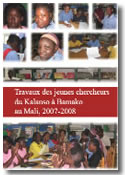A Walk in the Park November 18, 2012
by Kathryn Toure
A silver beech without her crown.
A pine with limbs lost and bright fresh wounds. 
A mighty oak’s snapped trunk.
A linden uprooted,
with a circle of underneath unhidden.
Many trees fell across paths and crushed fences,
upset Prospect Park.
One day, meeting the sky. The next, laid low
by soggy ground and a strong gust of wind. Some,
caught in midair, will decay in the branches of sisters.
I wonder how many chains
workers went through
a few sunny days after the storm
as they sawed trunks and branches
now lining the walkways and
looking like piles of bones.



Thousands Of Trees Gone, Ripped Out By Sandy
NPR – (null)
New York City lost almost 10,000 trees from the winds of Superstorm Sandy and the nor’easter that followed. That’s far more trees lost in the city than in any other storm for which tree damage was recorded.
Walking through Central Park, Ken Chaya peers past a stone arch, observing the damage and uprooting of about 800 trees. He knows more about the park’s trees than just about anybody else; he created a map that charts every single one of the roughly 20,000 trees.
“Looking over Glen Span, I can count 1-2-3-4-5 — at least five — fresh cuts of mature trees,” he says, also noting the number of tree crews.
The city’s Parks and Recreation Department, which looks out for street trees as well as those in parks, went on alert way before Sandy arrived. Five days before the storm, the department was already making arrangements with tree crews from around the country.
For several years, the department has noticed dramatic changes in weather. Bram Gunther, chief of forestry, horticulture and natural resources for the department, notes the unprecedented string of natural disasters in the last two years: two tornadoes, a freak storm that took down 500 Central Park trees, an unusual early winter storm and Tropical Storm Irene.
“When that happened, that really opened our eyes, and it opened our eyes to the power of these storms which we had not experienced directly in New York City, at least since I was a child,” Gunther says.
Irene took down about 3,400 trees throughout the city, while Sandy claimed three times that amount. Many of those trees were old, beloved and as large as 6 feet in diameter.
“The bigger the tree, the more carbon it captures, the more particulate matter it filters, the more storm water it captures,” Gunther says, “so it’s a huge number in terms of environmental benefits and what it does for a community.”
A study from the U.S. Department of Agriculture shows that the city’s more than 5 million trees remove 42,000 tons of carbon and about 2,000 tons of air pollution per year. They also have a whopping monetary value of $5.2 billion.
Twenty-four hours after the storm, the department sent people walking, riding and bicycling all 33,000 blocks of New York City with handheld computers, reviewing damage and putting in work orders.
“We do every single one to assess and evaluate the damage of the trees and the safety of that particular block,” explains Gunther, who monitored all the computers from his mobile command center.
In Central Park, Chaya points to a 75-year-old black locust. “Its trunk was just yanked out of the ground by the wind,” he says.
Nearby, a downed tree has pulled up a huge rock — a piece of Manhattan schist, the 450-million-year-old bedrock that lies beneath Manhattan. Chaya says there is only a little layer of soil over the bedrock and trees can’t sink a deep tap root, so they branch out horizontally. In a storm, many of the trees just topple over.
The city is already ahead of schedule in its commitment to plant 1 million trees by 2017. Because newly planted trees are small, Chaya says, it’ll be years before the city can truly be what he calls an urban forest.
“Our urban forest, it’s fading, we’re losing it,” he says. [Copyright 2012 National Public Radio]
Source: http://www.npr.org/2012/11/20/165580245/thousands-of-trees-gone-ripped-out-by-sandy?sc=ipad&f=1001
You expect to find great trees in city parks and botanical gardens. But you might not expect to find ancient or unusual trees in the inner city or smack dab in the middle of a highway.
Benjamin Swett has a love of trees so deep that he’s written pamphlets about them, created photo exhibits and now has a new book, New York City of Trees…
http://www.npr.org/2013/04/30/178639313/new-york-a-concrete-jungle-and-city-of-trees-too?sc=ipad&f=1001